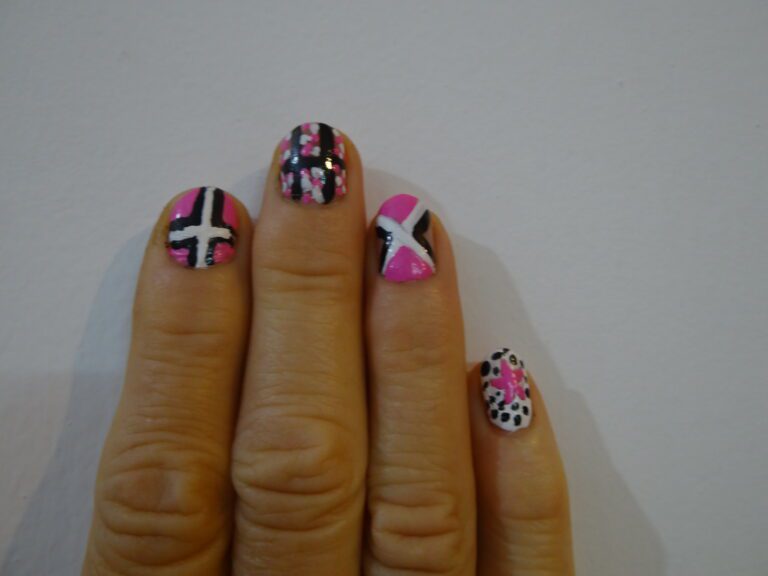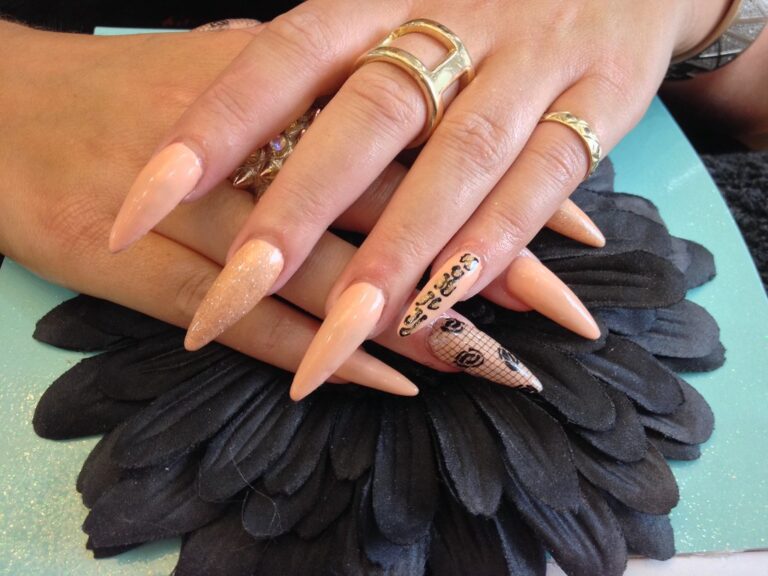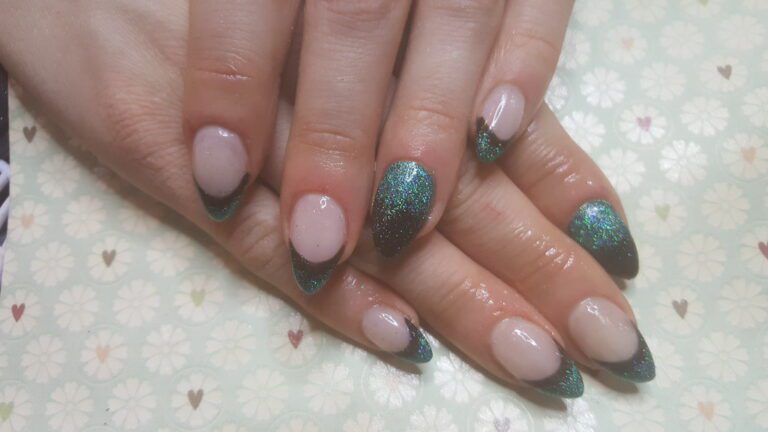“Health Chronicles: What Nails Say About Health”
In the world of health and wellness, nails can serve as a window into our overall well-being. From nutritional deficiencies to chronic conditions, our nails can reveal important insights about our health. Understanding the signs and symptoms that manifest in our nails is crucial for early detection and intervention. This article explores the fascinating connection between nail health and overall health, shedding light on what our nails can tell us about our bodies.
Key Takeaways
- Regularly inspecting your nails can help in identifying potential health issues early on.
- Nutrient deficiencies, such as iron and vitamin B12, may manifest as changes in nail color, shape, or texture.
- Maintaining proper hydration is essential for healthy nails, as dehydration can lead to brittle and dry nails.
- Nail abnormalities, such as spoon-shaped nails or pitting, can be indicative of underlying health conditions.
- Seeking professional advice for persistent or concerning nail changes is important for accurate diagnosis and treatment.
Unlocking the Clues: How Nails Reflect Overall Health

The Science Behind Nail Symptoms
Nails are not only a canvas for decorative art but also a mirror reflecting the state of our overall health. The condition of our nails can be indicative of various health issues, ranging from minor nutritional deficiencies to more serious systemic diseases. For instance, nail discoloration, ridges, and changes in growth rate can signal underlying health problems that may require attention.
Nails are composed of a protein called keratin, and their appearance can change due to a variety of factors, including diet, hydration levels, and systemic health. When examining nails for health clues, it’s important to consider their color, texture, and shape. A healthy nail is generally smooth, uniform in color, and free of pits or grooves.
Remember: Not all nail changes are cause for alarm. Some variations are normal and can be attributed to aging or environmental factors. However, persistent or severe changes should be evaluated by a healthcare professional.
Here’s a quick reference list of common nail symptoms and their possible implications:
- Yellowing may indicate fungal infection or chronic bronchitis.
- White spots often reflect minor trauma or zinc deficiency.
- Deep horizontal ridges, or Beau’s lines, could suggest severe illness or nutritional deficits.
- Clubbing, where nails curve around the fingertips, can be a sign of cardiovascular or pulmonary disease.
Common Nail Abnormalities and Their Implications
Nail abnormalities can be indicative of underlying health issues, serving as a visual cue for potential medical concerns. Changes in nail color, texture, or shape may signal the presence of nutritional deficiencies, infections, or chronic conditions. It’s important to pay attention to these signs and consult a healthcare professional for proper evaluation and diagnosis. Additionally, maintaining good nail hygiene and following a balanced diet can contribute to overall nail health and well-being.
Nutritional Telltales: What Your Nails Say About Your Diet

Identifying Nutrient Deficiencies Through Nail Examination
Nail examination can provide valuable insights into an individual’s nutritional status. Changes in nail color, texture, and shape may indicate underlying nutrient deficiencies. It is essential to observe the nails closely and look for signs such as pale or white nails, ridges, spoon-shaped nails, and brittle nails. These indicators can point to specific nutrient deficiencies, as shown in the table below.
The Impact of Hydration on Nail Health
Hydration plays a pivotal role in maintaining the integrity and resilience of nails. Adequate water intake ensures that nails remain moisturized from within, preventing brittleness and breakage. When the body is dehydrated, it prioritizes vital organs, often at the expense of nail health.
Brittle nails can be a sign of insufficient hydration. To combat this, it’s essential to consume enough fluids throughout the day. A simple way to monitor hydration levels is to observe the moisture content of the cuticle and the nail bed. If they appear dry or flaky, it may indicate a need for increased water intake.
Tip: Always keep a water bottle at hand and sip regularly, especially if you are in an air-conditioned environment or after exercising, to replenish lost fluids and support nail health.
In addition to drinking water, applying a hydrating nail cream or cuticle oil can provide external moisture and further protect against dehydration effects.
Chronic Conditions and Nail Changes

Nail Indicators of Thyroid Disorders
The thyroid gland plays a pivotal role in regulating metabolic processes throughout the body, and its dysfunction can manifest in various ways, including through our nails. Hypothyroidism and hyperthyroidism, the two primary types of thyroid disorders, can lead to distinct nail changes. For instance, hypothyroidism often causes nails to become brittle, dry, and thick, with noticeable ridges.
Brittle nails that easily crack or split may indicate an underactive thyroid, while an overactive thyroid might result in softer, more fragile nails. Additionally, a condition known as onycholysis, where the nail separates from the nail bed, can be associated with hyperthyroidism.
Tip: Regular monitoring of nail health can provide early clues to thyroid imbalances. If you notice persistent changes in your nail’s appearance, it’s advisable to consult a healthcare professional.
Understanding these symptoms can be crucial for early detection and management of thyroid disorders. It’s important to note that while nail symptoms can suggest a thyroid issue, they are not definitive and should be evaluated alongside other clinical assessments.
Psoriasis and Other Skin Conditions Affecting Nails
Skin conditions such as psoriasis can have a significant impact on the appearance and health of nails. Psoriasis, in particular, is known for causing a variety of nail changes. These changes can range from pitting (small depressions in the nail surface) to onycholysis (the separation of the nail from the nail bed). It’s important to recognize that while these symptoms can be distressing, they are also treatable.
Eczema, another chronic skin condition, affects nails differently than psoriasis. Nail eczema may lead to irregular nail texture and discoloration. Understanding the distinct manifestations of these conditions is crucial for effective management and treatment.
Tip: Consistent care and appropriate treatment are key in managing nail symptoms associated with skin conditions. Early intervention can prevent further complications.
In cases of nail psoriasis, some individuals may experience an increased nail growth rate. This phenomenon, while not widely studied, suggests that psoriasis may influence the overall nail life cycle. Monitoring these changes can provide insights into the progression of the condition and the effectiveness of treatments.
Infection Detection: Nails as a Diagnostic Tool

Fungal Infections and Nail Discoloration
Fungal infections are a common cause of changes in nail appearance, often leading to discoloration, thickening, and distortion of the nails. Toenails are particularly susceptible to these infections, which can develop slowly over time. The presence of debris under the nail and irregularities in the white part of the nail are telltale signs of a fungal issue.
The treatment of fungal nail infections can vary depending on the severity and the specific type of fungus involved. Over-the-counter antifungal treatments are available, but persistent or severe cases may require prescription medication or professional medical intervention.
Tip: Early detection and treatment of fungal nail infections are crucial to prevent the spread and worsening of the condition.
Maintaining good foot hygiene and keeping nails trimmed and clean are essential preventive measures. If you notice any persistent changes in your nails, it’s important to consult a healthcare professional for an accurate diagnosis and appropriate treatment plan.
The Link Between Nail Health and Systemic Infections
The state of our nails can often reflect more than just local issues; they can be windows to our body’s overall health. Systemic infections, diseases that affect the entire body, can manifest signs in our nails. For instance, endocarditis, an infection of the heart valves, may produce Osler’s nodes or Janeway lesions that appear as small, tender spots or non-tender flat spots on the nails.
When examining nails for signs of systemic infections, healthcare professionals look for specific changes. These include:
- Unusual nail coloration, such as red or brown streaks
- Changes in nail shape or texture
- Nail separation from the nail bed
Tip: Consistent observation of nail health can be a valuable practice for early detection of systemic issues.
It’s important to understand that while certain nail changes can suggest systemic infections, they are not definitive diagnoses. A thorough medical evaluation is necessary to determine the underlying cause of any nail abnormalities.
The Age Factor: How Aging Influences Nail Health

Normal Nail Changes with Aging
As we age, our bodies undergo various changes, and our nails are no exception. It’s common to experience a decrease in growth rate and an increase in brittleness. This can be attributed to reduced blood flow and slower cell turnover. Brittle nails may also result from prolonged exposure to water or harsh chemicals over the years.
Another change that often occurs is the development of ridges along the nail. These ridges are typically vertical and can become more pronounced with age. While they are usually harmless, they can be a sign of reduced nutrient absorption or a decrease in natural oils on the nail bed.
Tip: Keeping nails moisturized and avoiding harsh chemicals can help mitigate some of the age-related changes.
If you notice significant alterations in your nails, such as discoloration or detachment, it’s important to consult a healthcare professional as these could be indicative of underlying health issues.
When to Be Concerned About Age-Related Nail Changes
As we age, our nails undergo natural changes that are often a result of decreased blood flow to the nail bed and a decrease in cell turnover. Brittleness and increased dryness are common age-related nail changes that may cause nails to become more prone to breakage. It’s important to note that these changes can also be influenced by external factors such as repeated wetting and drying, and exposure to harsh cleaning chemicals or cosmetics like cuticle oil. Maintaining proper nail care practices can help mitigate the effects of age-related changes and promote overall nail health. Paying attention to these subtle changes and seeking professional advice when necessary can help address any concerns about age-related nail health.
Nail Care Best Practices for Optimal Health

Daily Routines for Strong, Healthy Nails
When it comes to maintaining strong, healthy nails, a consistent daily routine is key. Start by keeping your nails clean and dry to prevent bacterial and fungal infections. Moisturize your nails and cuticles regularly to maintain their flexibility and prevent breakage. Additionally, nourish your nails from the inside out by consuming a balanced diet rich in essential nutrients like protein, biotin, and omega-3 fatty acids. Finally, protect your nails from damage by wearing gloves during household chores and avoiding harsh chemicals. Remember, healthy nails start with a healthy routine.
Professional Treatments and When to Seek Them
After professional treatments, it’s important to maintain nail health with a consistent care routine. This includes keeping nails clean and dry, avoiding harsh chemicals, and using moisturizing products to prevent dryness and brittleness. Additionally, regular trimming and filing can help prevent breakage and maintain nail shape. It’s also essential to protect nails from excessive exposure to water and wear gloves when doing household chores. Finally, a balanced diet rich in essential nutrients and staying hydrated are crucial for overall nail health. Here are some key tips to maintain healthy nails:
Proper nail care is essential for maintaining optimal nail health. By following best practices, you can ensure that your nails remain strong, healthy, and beautiful. Regular moisturizing, trimming, and avoiding harsh chemicals are just a few of the key steps to keep your nails in top condition. At NAILinspire.com, we provide a wealth of resources and tips for nail care, along with a wide range of nail art designs to inspire your creativity. Visit our website today to discover the ultimate online nail art design library and take the first step towards healthier, more beautiful nails.
Frequently Asked Questions
How do I know if my nails are indicating a health problem?
Pay attention to changes in color, texture, and shape of your nails. Consult a healthcare professional if you notice any significant abnormalities.
Can nutrient deficiencies really be identified through nails?
Yes, certain nutrient deficiencies can manifest as changes in the nails. However, it’s important to consult a healthcare professional for accurate diagnosis and treatment.
What are some common nail abnormalities and their implications?
Common abnormalities include brittle nails, white spots, and ridges. These can indicate various health conditions or nutritional deficiencies.
How can I maintain healthy nails?
Maintain a balanced diet, keep nails clean and dry, avoid harsh chemicals, and use moisturizer. Regularly trim and file nails to prevent breakage.
Are fungal nail infections common?
Yes, fungal nail infections are quite common. They can cause discoloration, thickening, and brittleness of the nails. Proper treatment is essential to prevent spread.
Should I be concerned about changes in nail health as I age?
Some changes in nail health are normal with aging, but significant changes such as discoloration, thickening, or separation from the nail bed should be evaluated by a healthcare professional.






